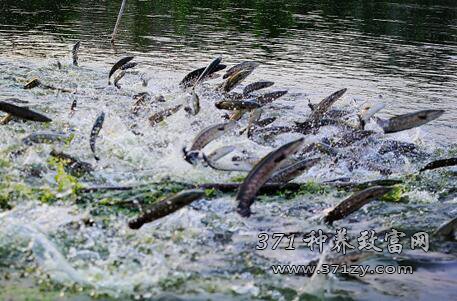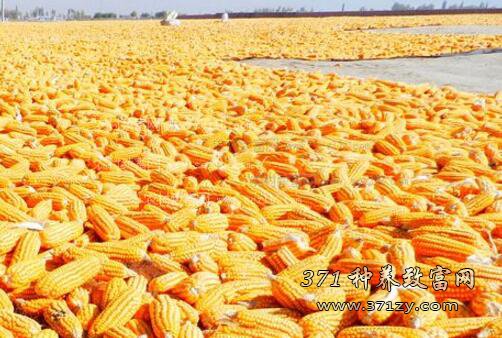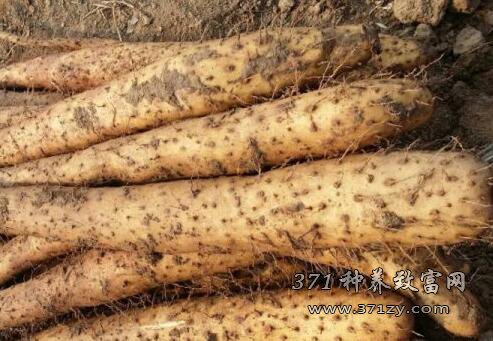Analysis on the market price of raw fish here comes the opportunity to make money from farming raw fish in 2017
It is understood that the current head price of raw fish ponds is still hovering around 6 yuan / jin, on the verge of losing money, the stock of old fish is not small, and the market of raw fish is still not optimistic in a short time. Since the price of raw fish rose to an unprecedented high of 12 yuan per jin in the first half of 2014, it triggered a frenzied aquaculture tide and led to a serious surplus of aquaculture, and even now there are still many old fish from 2014. Now raw fish has been at a trough of 6 yuan to 7 yuan per jin for two consecutive years. Most farmers in 2-3 ponds have to lose hundreds of thousands of yuan, and even many farmers lose millions of yuan. Make many raw fish farmers gradually withdraw from the market. At the same time, dealers are also in a state of operational difficulties, most of the dealers are difficult to get back their accounts, and have been transformed or even eliminated.

The main reason for the development of raw fish falling into such a passive situation is still the disorderly farming state of the scattered farmers, and the demand at the production end is seriously unable to keep up with the demand at the consumer end, especially the people's living standard is getting higher and higher. Consumers are constantly pursuing higher quality, safer and healthier food. In this context, the production side still stays in the original pursuit of output, cost control, ignoring product quality, so transformation and reform are inevitable. In other words, the consumer side forces the production end to transform. On the surface, there is a serious overcapacity of aquatic products, but in fact, it is serious homogenization of product quality, lack of product differentiation, poor quality, lack of competitiveness, insecurity and so on, especially in the context of oversupply. The problem of the outbreak of the industry is becoming more and more obvious.
However, in the period of industry change, some people can continue to make profits, some reduce costs, some change their farming ideas, and some increase production. For example, Liang Shangzhuang, a farmer in Xingtan, Shunde, Guangdong Province, made a profit of more than 23000 yuan per mu of raw fish and won the title of "Fish King of the year 2016". Pan Yongbo in Jiujiang in the South China Sea has a yield of 34000 jin per mu and won the title of "annual output in 2016". Xingtan he Jinquan fine raw fish in Shunde won the title of "breeding talent".... This means that in the process of survival of the fittest, on the one hand, farmers without technology and capital will gradually withdraw from the market, and on the other hand, excellent farmers will gradually develop and grow, thus guiding the transformation and reform of the aquaculture structure, and finally feedback to the transformation of the whole industrial chain.
At the forum, the participants expressed their own opinions and suggestions.
Chen Kunci, director of the Germplasm Monitoring Center of the Pearl River Fisheries Research Institute, said that the national raw fish culture output reached more than 600,000 tons, while Guangdong's raw fish culture area of 68000 mu, with an output of 220000 tons, is the eighth largest aquaculture species in China.
The key to the cultivation of raw fish is to improve the quality of seedlings, strengthen the selection of parents, pay attention to the breeding of parent fish, and guard against drug overuse in the fry stage. What is really safe is aquatic products.
Xiao Qun, a senior trader, will say that in the early history of raw fish circulation (before 2002), the largest raw fish logistics base in Wuhan, Hubei, diverted raw fish to markets all over the country. The middle period (2000-2008) was the heyday of the development of Wuhan distribution market. 50% of raw fish from several major raw fish producing areas in China (Guangdong, Dongting Lake in Hunan, Luqiao in Shandong, Anhui and Poyang Lake in Jiangxi) were transported to this area for transit. In the later stage (after 2008), two major raw fish distribution centers were formed in the country.
At present, with the rapid development of raw fish culture in Guangdong, Guangdong has become the largest main producing area in the country, and has gradually formed a large distribution center. The radiation scope of the two distribution markets in Wuhan, Hubei and Tengzhou, Shandong Province has gradually narrowed. Can only be distributed to the local surrounding market.
With the development of raw fish culture industry and the change of aquaculture production areas, the circulation mode which used to rely mainly on distribution centers has gradually changed. At present, the relatively large scale of raw fish circulation has spread all over the country, and has begun to operate in a "point-to-point" circulation mode, directly connecting the producing areas and markets all over the country. They set up their own stores in the primary wholesale markets throughout the country, collect fish from the main producing areas and send them to their outlets, and then sell them to the local secondary and tertiary markets through these outlets.
"peer-to-peer" is a model that many raw fish merchants are considering and implementing. The model has the advantages of stable price, planning, persistence, wide radiation and so on.
The demand for different specifications of raw fish in different markets, except the two major transit markets of raw fish in Wuhan, Hubei and Tengzhou, Shandong, the demand for different specifications of raw fish in other primary markets in China.
- Prev

How much is the corn now? Analysis on the trend of Corn Price in 2017
How much is the corn now? Analysis on the trend of Corn Price in 2017
- Next

How much is Baiyushan medicine per jin? Analysis on the Price of Chinese Yam in 2017
How much is Baiyushan medicine per jin? Analysis on the Price of Chinese Yam in 2017
Related
- A course of planting techniques and methods on how to grow carrots
- How to plant the latest tulips?
- Is it better to pick tea in the morning or in the afternoon? When is the best time for tea to be picked? what is the third or fifth tea?
- Launch Yuanxiao Happy combination Haocha + Tea Yuan healthy Taste
- Penghu Tourism "Fireworks 20 Parade with You"
- 2022 West Lake Happiness holds "Digital Revitalization Voucher" and draws iphone13 and laptop.
- Banqiao Fuzhou social houses are designed to change start-up combined with police elimination to create a safe and livable environment
- The convenient measure of "mechanical weeding" in Xinbei has been abused and the Agriculture Bureau has imposed heavy penalties on the illegal land consolidation.
- Changgeng University Joins Hands with Four Memory Factories to Rescue Memory Talent Shortage
- The list of Taiwan's top 100 MVP managers is listed by the Director-General of the Farmers' Association of Sanxia District.

